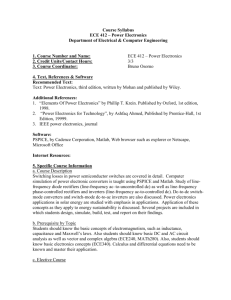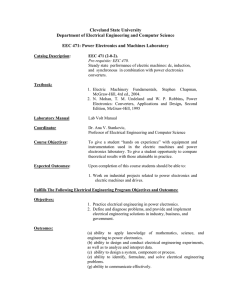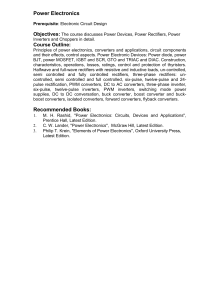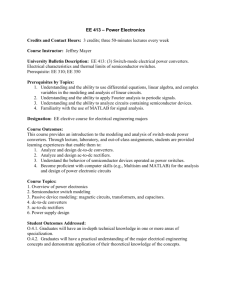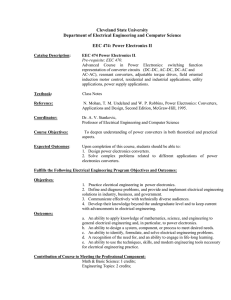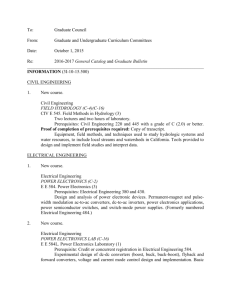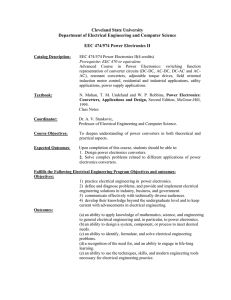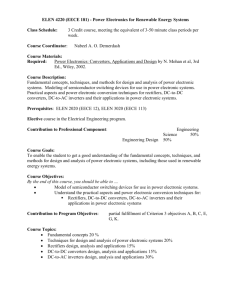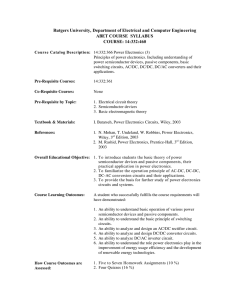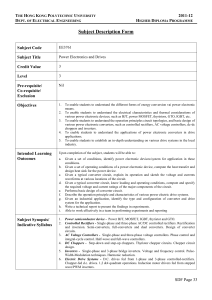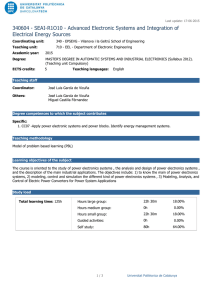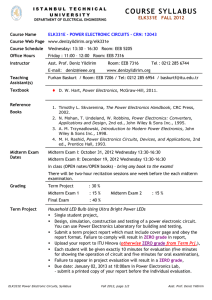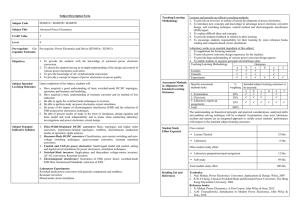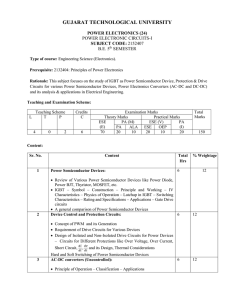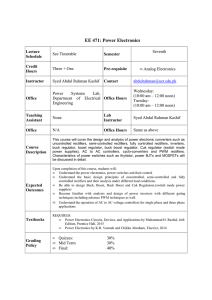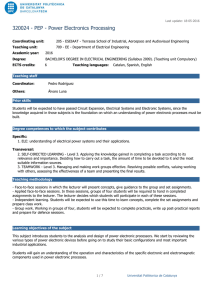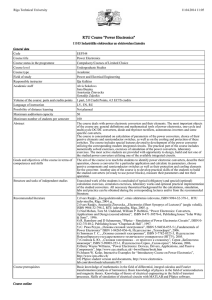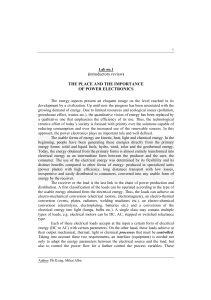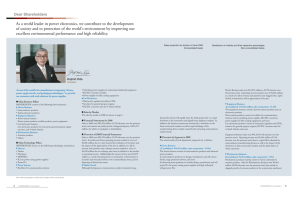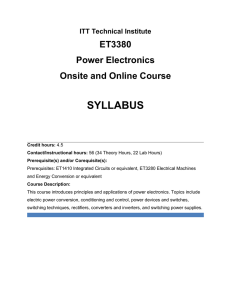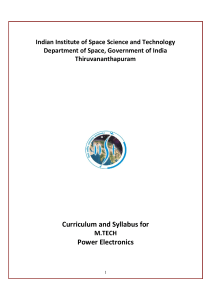Cleveland State University Department of Electrical Engineering and Computer Science
advertisement
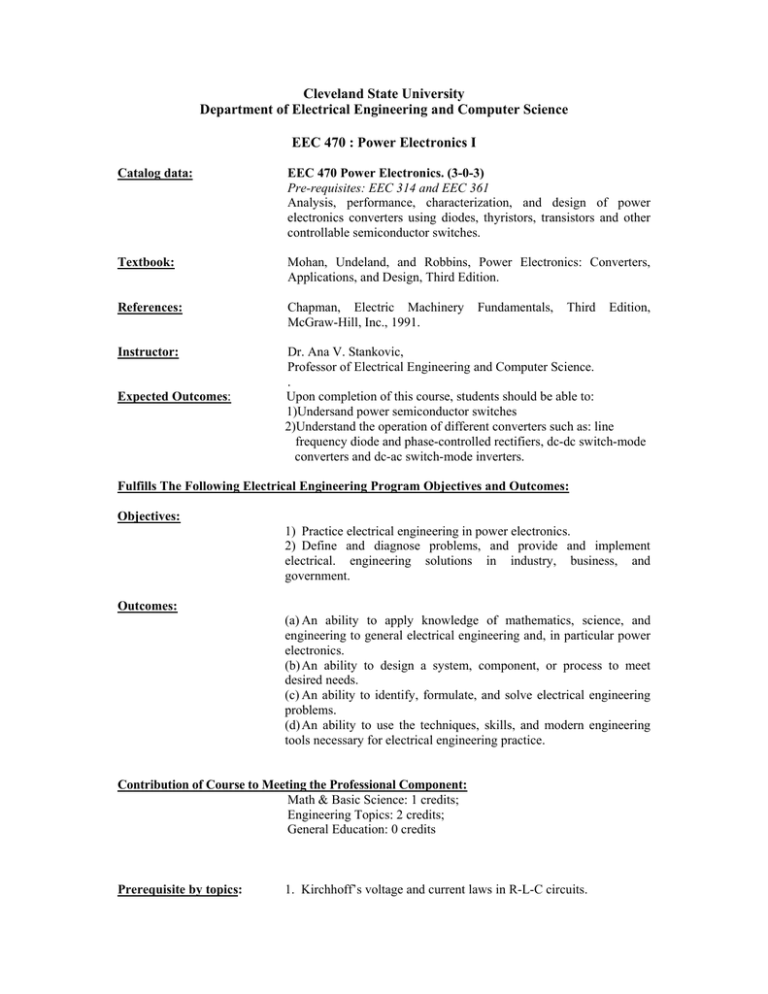
Cleveland State University Department of Electrical Engineering and Computer Science EEC 470 : Power Electronics I Catalog data: EEC 470 Power Electronics. (3-0-3) Pre-requisites: EEC 314 and EEC 361 Analysis, performance, characterization, and design of power electronics converters using diodes, thyristors, transistors and other controllable semiconductor switches. Textbook: Mohan, Undeland, and Robbins, Power Electronics: Converters, Applications, and Design, Third Edition. References: Chapman, Electric Machinery McGraw-Hill, Inc., 1991. Instructor: Dr. Ana V. Stankovic, Professor of Electrical Engineering and Computer Science. . Upon completion of this course, students should be able to: 1)Undersand power semiconductor switches 2)Understand the operation of different converters such as: line frequency diode and phase-controlled rectifiers, dc-dc switch-mode converters and dc-ac switch-mode inverters. Expected Outcomes: Fundamentals, Third Edition, Fulfills The Following Electrical Engineering Program Objectives and Outcomes: Objectives: 1) Practice electrical engineering in power electronics. 2) Define and diagnose problems, and provide and implement electrical. engineering solutions in industry, business, and government. Outcomes: (a) An ability to apply knowledge of mathematics, science, and engineering to general electrical engineering and, in particular power electronics. (b) An ability to design a system, component, or process to meet desired needs. (c) An ability to identify, formulate, and solve electrical engineering problems. (d) An ability to use the techniques, skills, and modern engineering tools necessary for electrical engineering practice. Contribution of Course to Meeting the Professional Component: Math & Basic Science: 1 credits; Engineering Topics: 2 credits; General Education: 0 credits Prerequisite by topics: 1. Kirchhoff’s voltage and current laws in R-L-C circuits. 2. 3. 4. 5. 6. Solution of first- and second-order differential equations. Electric circuits in sinusoidal steady state. Fourier series expansion of periodic waveforms Simulation of electric circuits with PSpice. Balanced three-phase systems. Topics: Power Electronics Systems Semiconductor Devices Review of Basic Electric Circuit Concepts Quizzes Rectifiers- Line Frequency Diode Rectifiers Line-Frequency Phase -Controlled Rectifiers Line-Frequency Phase - Controlled Inverters Discussions Midterm Exam DC/DC Switch Mode Converters- Step Down DC/DC S Switch Mode Converters - Step-up DC/DC S Switch Mode Converters -Buck-Boost Review Total Grading: 30% - Midterm Exam 35% - Final Exam 15% - Quizzes 20% - Projects and Homework Homework: Has to be turned in on time. Computer Usage: Software: PSPICE Estimated ABET Category: Engineering Topics: 3 credits or 100% Laboratory Projects: Power Converter Simulation by using PSPICE (3 projects and 3 homework assignments) Prepared by: Dr. Ana V. Stankovic Date: 08 20 2013 1 4 4 4 4 4 4 3 4 4 4 2 3 45
